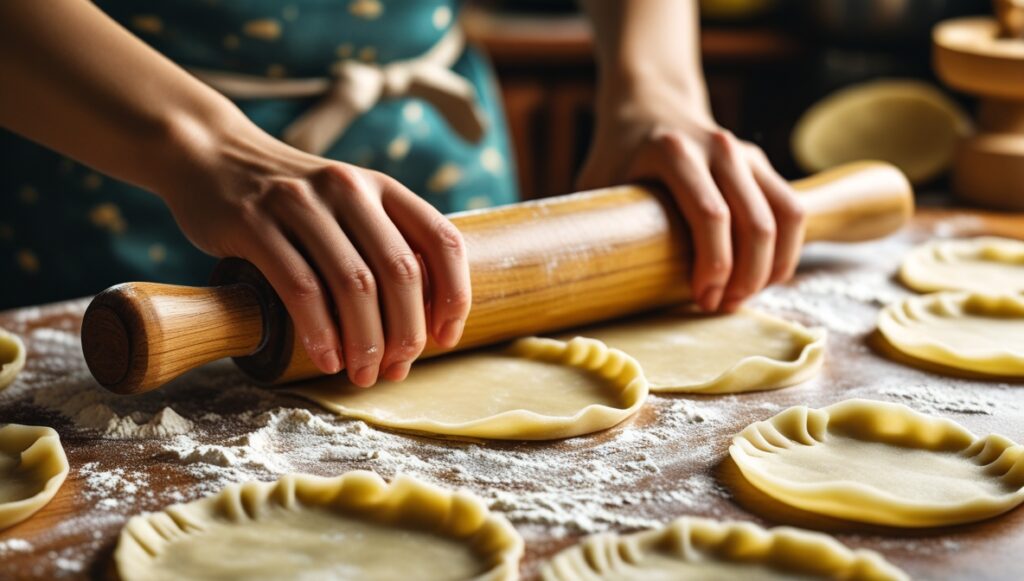Introduction
Xiaolongbao, or soup dumplings, are one of China’s most iconic and beloved dishes. Originating from the Jiangnan region, particularly Shanghai and Suzhou, these delicate parcels of dough filled with juicy pork and hot savory broth are a true testament to Chinese culinary finesse. Known for their paper-thin skin and flavorful soup, This dish have become a cultural treasure, adored by locals and international food lovers alike.


History & Cultural Significance
Xiaolongbao dates back to the 19th century in Nanxiang, a town in Shanghai. It was invented by a local restaurant as a twist on traditional buns, incorporating gelatinized broth that melts into soup when steamed. Historically, they were enjoyed during family gatherings and festivals like the Lunar New Year. Today, Xiaolongbao is a national symbol of Shanghai’s street food scene and a must-try dish for tourists.
Ingredients & Regional Variations
Key Ingredients:
Minced pork (or crab/prawn variants)
Gelatinized meat broth
Flour-based dough wrappers
Ginger, soy sauce, Shaoxing wine, sesame oil
Regional Versions:
Shanghai-style: Thin-skinned, juicy, delicate, with a hint of sweetness.
Suzhou-style: Slightly sweeter filling and thicker wrappers.
Modern Variants: Truffle-filled Xiaolongbao, vegetarian options with mushroom broth, or fusion versions like cheese-stuffed dumplings.
Cooking Process & Difficulty Level

Difficulty Level: Intermediate to expert
Cooking Process Overview:
-
Prepare gelatinous stock using pork bones and cool it into cubes.
-
Mix minced pork with seasonings and fold in the gelatin cubes.
-
Roll dough into small, thin wrappers.
-
Place filling in center and pleat the dough into a bun shape.
-
Steam over bamboo steamers for 8–10 minutes.
Where to Eat Xiaolongbao in China
-
Din Tai Fung (Shanghai & Worldwide): Michelin-starred chain known for ultra-refined Xiaolongbao.
-
Jia Jia Tang Bao (Shanghai): A local favorite with long lines and authentic taste.
-
Nanxiang Mantou Dian (Yu Garden, Shanghai): Historic shop where Xiaolongbao was born.
-
Yang’s Dumplings (Shanghai): A street food favorite offering pan-fried versions.
Pairing with Drinks & Side Dishes
Drinks That Pair Well:
-
Jasmine tea or Oolong tea
-
Plum wine or light beer
-
Soy milk for breakfast versions
Best Side Dishes:
-
Pickled vegetables
-
Stir-fried greens (e.g., bok choy or Chinese broccoli)
-
Cold sesame noodles
Fun Facts & Lesser-Known Trivia
-
Xiaolongbao can contain up to 18 folds, a mark of expert craftsmanship.
-
Some chefs use turkey basters to inject broth directly if not using gelatin.
-
Internationally, celebrities like Anthony Bourdain and the late Ruth Reichl have praised it.
-
It’s often compared to Italian ravioli or Japanese gyoza, though it’s unique in soup content.
Health Benefits & Nutrition
-
High in protein due to meat content.
-
Can be rich in collagen (from bone broth).
-
Lighter than fried dumplings, though sodium levels can be high.
-
Vegan versions use tofu and mushroom stock.
How to Cook It at Home (Best Xiaolongbao Recipe)
Basic Ingredients:
-
1 lb minced pork
-
1 cup pork broth (gelatinized)
-
Dough: 2 cups all-purpose flour + water
-
Soy sauce, ginger, sesame oil, salt
Steps:
-
Mix pork, seasonings, and broth cubes.
-
Knead and rest dough; roll into small circles.
-
Add filling, pleat and seal.
-
Steam in bamboo basket lined with cabbage leaves.
-
Serve with black vinegar and ginger.
Tips:
-
Use frozen stock to handle it easier.
-
Don’t overfill to avoid leaks.
-
Always serve hot!
Global Influence & Fusion Cuisine
This dish has inspired:
-
Soup dumpling burgers in NYC
-
Truffle-filled dumplings in Hong Kong
-
Vegan interpretations in California
-
Cheese or kimchi-filled versions in Korea
Comparison with Similar Dishes
Xiaolongbao vs. Japanese Gyoza:
-
Gyoza are pan-fried and have no soup inside.
-
Xiaolongbao are steamed and contain hot broth.
Xiaolongbao vs. Korean Mandu:
-
Mandu is usually bigger and more filling-heavy.
-
Xiaolongbao focuses on delicate skin and soup.
Xiaolongbao vs. Nepalese Momos:
-
Momos are spiced differently and often served dry.
-
Xiaolongbao features mild flavors and rich broth.

